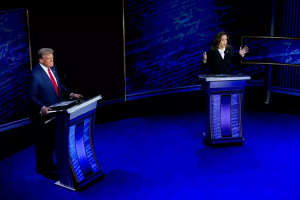
Breaking Down Harris’s Economic Plan
In terms of its effect on the budget, Harris’s biggest proposal would be an expansion of the child tax credit to up to $3,600 per year per child from its current level of $2,000, matching the temporary credit expansion implemented by President Joe Biden in 2021 as a pandemic relief measure. On top of that, she would add a $6,000-per-year credit for children in their first year of life.
Together, her proposals would cost $1.2 trillion over 10 years, according to the analysis of the Committee for a Responsible Federal Budget. Other items pushing up the deficit: expanding the earned income tax credit for lower income workers, providing a $25,000 tax credit for first-time homebuyers, and expanding Affordable Care Act subsidies, pushing down premiums for people enrolled in Obamacare.
Harris’s proposed tax hikes on the wealthy and corporations could cover most or all of those costs in the CRFB’s analysis. The most significant would be increasing the corporate tax rate to 28% from 20%, which would raise $1 trillion. The 25% “billionaires tax” on income and unrealized investment gains for people with more than $100 million unrealized investment gains would raise an additional $500 billion.
Breaking Down Trump’s Economic Plan
Trump’s costliest proposal is ending the tax on Social Security benefits, which would reduce revenue by $1.6 trillion to $1.8 trillion in the CRFB’s analysis. Lowering the corporate tax rate to 15%, as Trump proposed, would reduce revenue by another $200 billion.
Trump has promised to pay for those tax breaks—and pay down the national debt— by raising tariffs on foreign imports; estimates by multiple economists projected those policies would not bring in nearly enough to cover the tax breaks, let alone put a dent in the national debt. The CRFB estimated Trump’s 60% tariff on Chinese imports could take in as much as $300 billion, or end up reducing revenues by as much as $50 billion because of how much it would hurt the economy.



